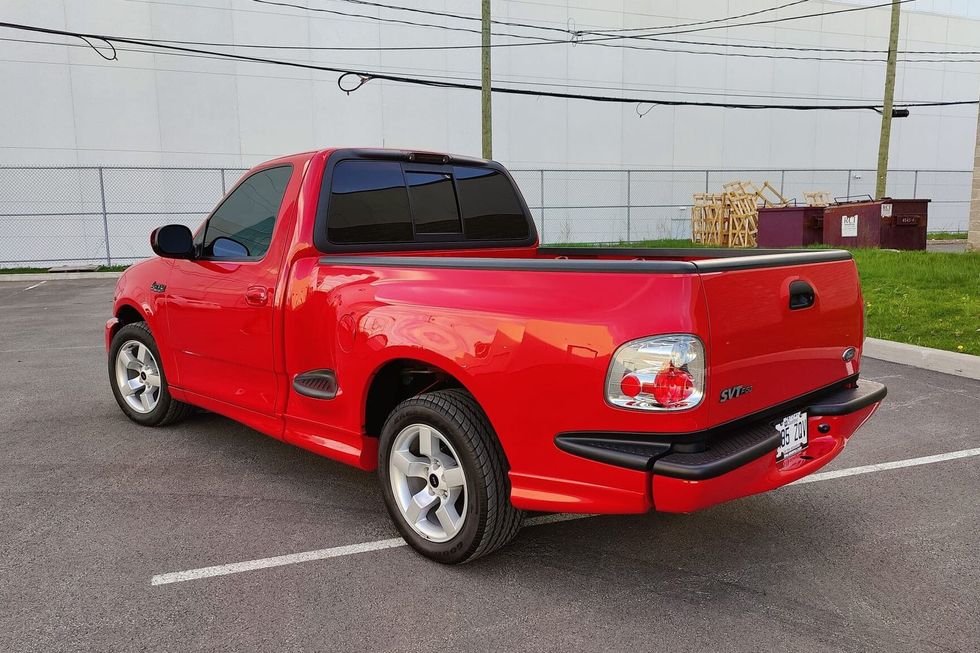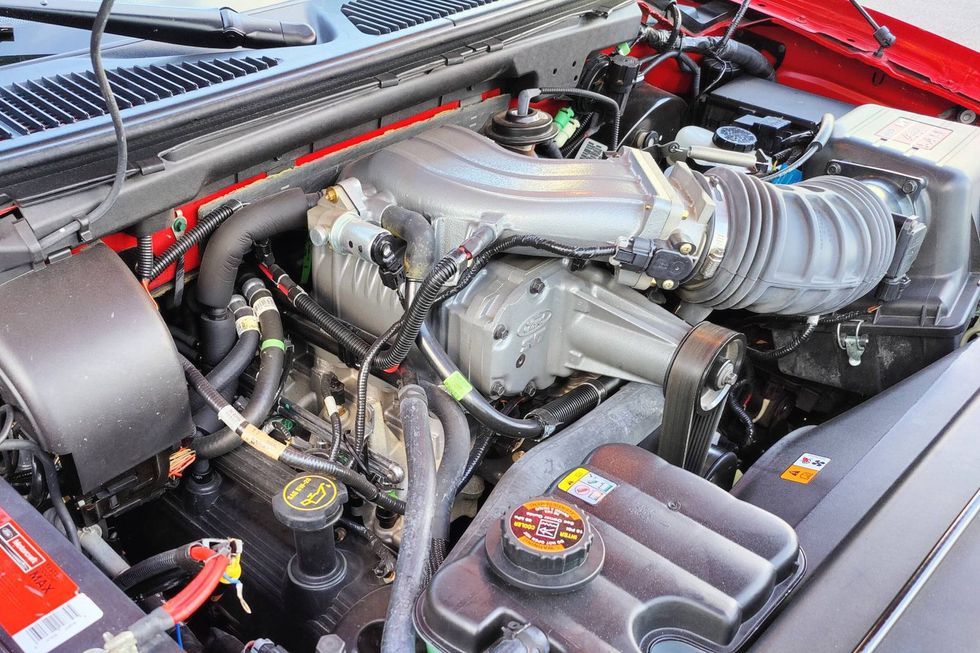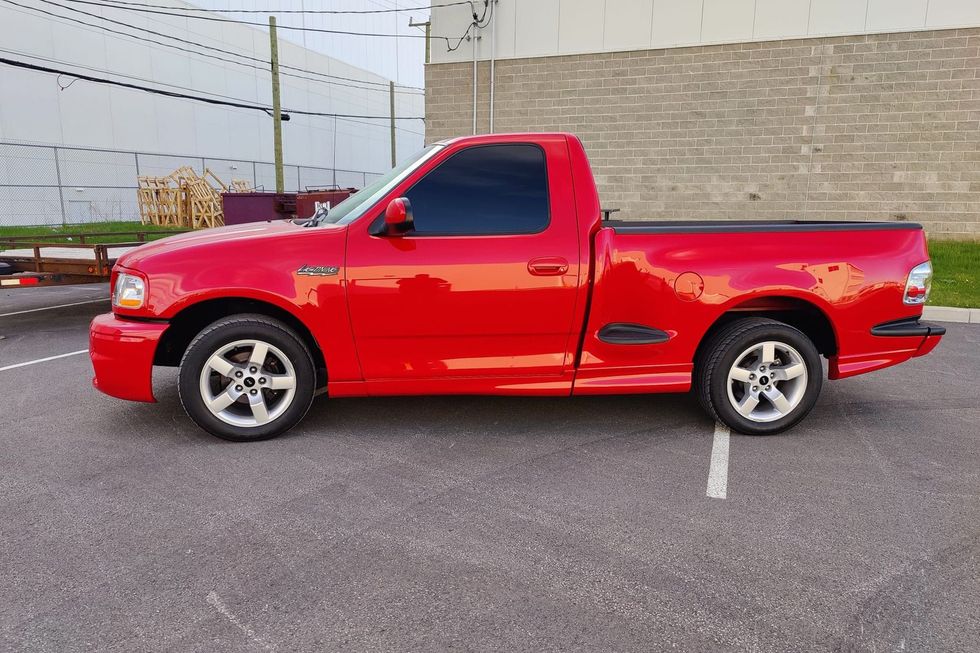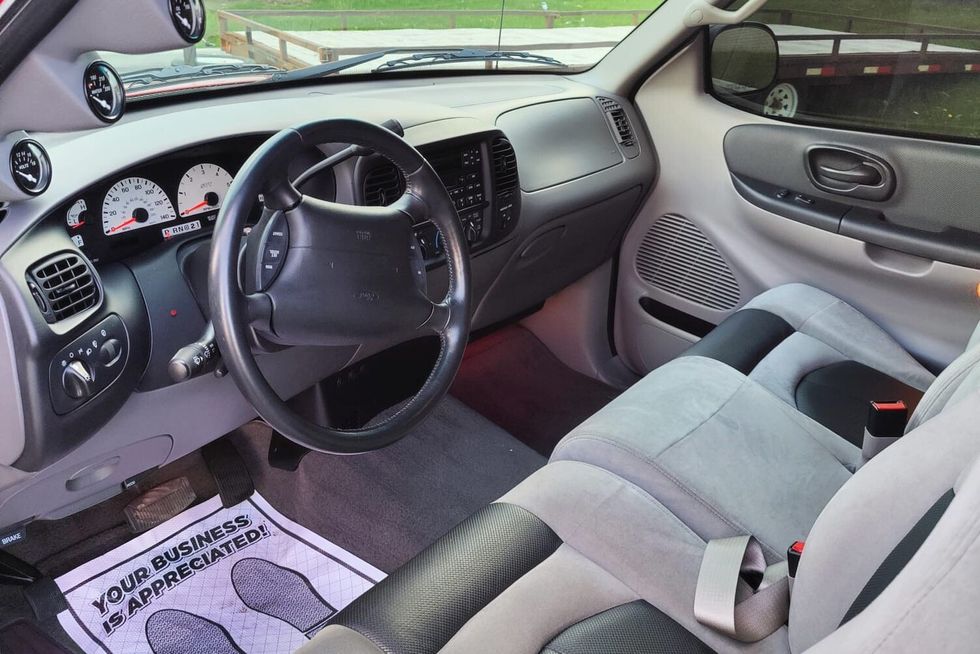From Avocation to Vocation - 1979 Fiat 2000 Spider
Rescued twice, the 1979 Fiat 2000 Spider that launched a business
09/23/2018


The car is flatly gorgeous, technologically tasty, and today the beneficiary of far more postmortem respect than most of the automotive world awarded it during its lifetime. Nowadays, those who truly understand them venerate the sporting roadsters based on the Fiat 124 as genuine paragons of understated good taste and spirited motoring amid true continental comfort. Too late, at least from the standpoint of their builder, the 124 and Spider 2000s are chic. They hold their value admirably. They merit restoration and in a handful of instances, can even become a life's work. This is one such case.

They even got solidly onto our own list of favorite imported roadsters that you'll find elsewhere in this edition of HS&EC, to the tune of 200,000 units cranked out by Turin during its 18-year lifespan. Most people are satisfied with owning one or two, like Jon Logan, of Hilliard, Ohio. Indeed, his fleet is limited to exactly one such Fiat, this 1979 Spider 2000, finished in dark blue, which takes its name from the displacement increase to 2,000cc that happened during that model year. Jon's been working at it for a long time, and it's proven to be good practice. He now operates Midwest 124 (see HS&EC #53, January 2010) on a part-time basis, and justifiably characterizes himself as "kind of the go-to guy in the country for the 124s for pretty much anything mechanical; engines, transmissions, heads, carburetors. My involvement in this business stemmed directly from this one car."
Jon's father became the Spider 2000's second owner when he bought it in 1984, after it had been sold new in central Ohio. At that point, Fiat had essentially been driven back into the sea by irate U.S. buyers who had seen their Stradas and Bravas vaporize nearly before their eyes due to corrosion. To a degree, the 124 Spider and Spider 2000 were beset by the same bad reputation, and Jon told us they've earned it. "That would be the primary issue that you would have with these cars, fundamentally; it is going to be rust," he said. "It's the immediate, most identifiable issue that you would have if you were buying one. There are a couple of reasons: Before 1978, Fiat really wasn't doing any kind of rustproofing on the vehicles whatsoever. It was only in 1979 and later that Fiat even undertook any kind, a cursory kind, of rust-inhibiting treatment. The steel that was used in them was a fairly high-iron kind, so that was part of the reason. And on the earlier Spiders, the paint was only applied to the exterior surfaces of the sheetmetal, not the interior surfaces. It's not as if the cars were dipped. So the interior areas of the car tended not to have any paint on them at all. They pretty much rusted from the inside out, pretty quickly."
If you listen to Fiat folklore, you'll hear that the company sourced a lot of its lower-grade sheetmetal, with reduced carbon content, during the 1970s from suppliers in the then-Soviet Union. The orange curse had largely spared Jon's Spider, however, when his father bought it on a used-car lot in nearby Columbus. The real issues with the car were on the mechanical side: namely, a blown head gasket, something that's plagued these Fiats on a consistent basis. As Jon explains it, there's nothing inherently wrong with the engine, a stout, aesthetically handsome twin-cam whose heat-treated crankshaft runs in five main bearings. Rather, the issue lies in its mating of a crossflow aluminum cylinder head to a cast-iron block, and the way that service technicians handled that juncture. At the time, lots of Fiat franchises were located in dealerships selling other makes, and service could be indifferent.

"Less than knowledgeable, I would say," was Jon's description. "At that time, the idea of a cast-iron block and an aluminum head was still kind of foreign to a lot of domestic dealerships that were carrying Fiat as an extra brand, so they didn't understand the properties of the different metals, or the importance of re-torquing head gaskets after a short period of time. There were also some electrical issues, mainly ground problems or turn-signal switches that didn't work. When my dad got this car, that very evening, the turn signals and headlamps both didn't work."
Some rust did intrude, in the fenders, rocker panels and quarter panels. Jon essentially describes the 2000 Spider as a continuing course in maintenance, repair and upgrades for the entire time it's been in his family. For instance, his father was living in Batesville, Arkansas, some 20 years ago, or more, when he decided some rust remediation was in order. After a less-than-stellar try at stripping and fixing the unibody by himself, Jon's father made a very unlikely acquaintance, Toby Nick Archuleta, who under his nickname, Archie, ran a tiny specialty body shop in Batesville. Archie was old-school, believing in doing both bodywork and finishing by hand. The Spider 2000, as you see it here, is largely his legacy; Archie passed away in January. Archie cut out the corroded panels around the fenders, hand-made patch panels on an English wheel--reproduction units largely didn't exist yet--media-blasted what remained and smoothed everything up with a little body filler. He matched the factory Fiat deep blue color using lacquer-based paint, which was still allowable.
Jon acquired the Fiat when, sadly, his father died of pancreatic cancer in 1999. He had it shipped from his father's last home in Arizona, and took stock. "The body and interior hadn't deteriorated at all. In fact, other than a paint restoration that became necessary later, the bodywork is pretty much as Archie completed it."
He did start doing some cosmetic upgrades, gradually. He swapped the steel disc wheels that had been on since his father acquired the car for a year-correct set of Cromodora-type Iron Cross alloy rims. The fabric top was literally falling apart, a consequence of age and the desert solar rays. The replacement roof came from Robbins, via International Auto Parts.
While driving during all this, Jon noticed that the engine lacked smoothness and was constantly wanting to overheat. Off came the head, which revealed--you guessed it--a blown head gasket. Jon's overreaching goal was to create a stock-appearing Spider 2000 with measurably increased horsepower, so that was fine. He swapped in a higher-compression head from a 1978 124 Spider, which displaces 1,800cc, which gained him about half a point of compression but was a simple bolt-on. A big part of his current workload at Midwest 124 involves this type of component matching. As he said, "I started learning more and more about what you could do with these engines, and decided that I wanted to build a higher-performance engine from the ground up: fully balanced, high-compression pistons, a ported cylinder head, the whole works. I bought a local 124 Spider as a parts car for $500, because I wanted to use the long-block, got the parts I wanted, and ended up selling about $1,500 worth of parts. That's what got me going on buying cars, tearing them down, and selling the parts to feed my hobby."
A local machine shop did the block boring and balancing; Jon did everything else. He fitted Mahle forged aluminum pistons with 4mm domes, which brought compression to an even 10.0:1. The stock connecting rods, crankshaft and front pulley were all balanced. So was the stock flywheel, although Jon would now prefer to have used a lighter one for a little more throttle snap. He gasket-matched the intake manifold to the cylinder head, at the time using a Dremel Moto-Tool with flex shaft to grind, deburr and sand the ports. He used a Neway carbide-bladed cutter kit on the valve seats, which he still does by hand for customers today. The machine shop did a light resurfacing on the head. The displacement is close to stock, the Mahle pistons being 0.6mm larger, 84.6mm, for optimal skirt-to-bore clearance. Eventually, he went back to a ported 2,000cc fuel injection-type cylinder head, which improved airflow significantly. The intake manifold is known among Fiatifosi as a waffle top, in honor of the cross-hatched casting, from a 1972 124 coupe that had the twin carburetor option. It's fed by dual 48mm Weber IDA downdraft carburetors. Engines that Jon built similar to this one have produced 155hp and 150-lbs ft of torque on the dyno.
At Midwest 124, Jon managed to acquire dealer inventories of NOS drivetrain parts, and replaced everything in the five-speed gearbox but the case and the mainshaft with new factory components. Underneath, Jon installed new trailing arms, Koni Classic adjustable shock absorbers and new Vick Autosports coil springs that dropped the Fiat's ride height by an inch.
The finished Spider 2000 was impressive enough to show at the Ault Park Concours in Cincinnati, and then...horror. About two years ago, Jon was pulling the car out of storage when he spotted what looked like thick dust, all over the interior and exterior. It turned out to be overspray, which occurred when the rental storage owner had a crew come in to pressure-paint the bay doors with thick, epoxy-base coating.
"Every single inch of my car was covered with it," Jon said. He took it to a for-real specialist: Todd Cooperider, owner of Esoteric Auto Detail in New Albany, Ohio. Todd is a technical adviser on appearance care for the Ferrari Club of America, and even though he spends most of his time with far more costly Italian cars, recognized Jon's emotional attachment to the Spider 2000 and agreed to take it on. The first thing it got was a very strong cleaning with detailing clay, which came away bright green. Todd then polished the paint by hand with Klasse AIO cleaner. Some of the overspray had intruded beneath the hood and trunk, and even the fuel filler flap. The larger body panels required wet-sanding with 8,000- to 12,000-grade paper sandwiched in foam. The finish was then treated with Meguiar's D300 compound applied with DA cutting discs.
"I think Todd spent something like 40 hours just to get the paint off and recover the finish," Jon said. "This is still Archie's paint work, and since it's lacquer, which you can't use anymore, when you polish it, the depth of the blue is incredible, just beautiful."
Forget Ford’s groundbreaking electric truck for a moment to consider this 2001 Ford SVT F-150 Lightning now offered on Hemmings Auctions. Instead of the dual permanent-magnet motors found in the current electric Lightning, the 1999-2004 SVT Lightning featured a supercharged version of Ford’s 5.4-liter “modular” OHC V8. Rated at 380 horsepower in the 2001-’04 models, it was good enough to make a stock lightning a formidable opponent on the street as well as at the strip.
A follow-up to the original 1993-’95 F-150 Lightning, which was a high-performance version of a standard F-150, the second-generation SVT super truck presented as a more thoroughly developed model with a lot more exclusive components that further differentiated it from the rest of the F-Series lineup. Beyond the engine, the entire suspension and braking system, not to mention aerodynamic body add-ons, were part of the Lightning package from 1999 through 2004. Exclusive interior components were also part of the package.
At the heart of this SVT Lightning is its iron-block 5.4-liter SOHC, 16-valve V8 with a supercharger and an intercooler. The blower helped it deliver 380 horsepower and 450 lb-ft of torque in 2001, up some 20 horsepower and 10 lb-ft from the ’99 and 2000 models. The Eaton supercharged engine delivered peak boost of 8.0 psi and the engine featured an 8.4:1 static compression ratio, down from the standard 5.4 V8’s 9.0:1, which was rated at 260 horsepower and 350 lb-ft.
Power reached the rear 18-inch cast aluminum-alloy wheels via a four-speed automatic, an aluminum driveshaft and a beefy 9.75-inch, limited-slip rear axle with an acceleration-friendly 3.73:1 final-drive ratio, another upgrade for 2001. Car and Driver magazine reported a 0-60 mph time of 5.2 seconds and a quarter-mile in an E.T. of 13.8 seconds at 104 mph—impressive numbers for a 4,600-pound truck. Top speed was a drag-limited 142 mph.

Trucks generally require a suspension that can handle a full load in its bed while also providing competent driving while empty. But if you fancy one designed to a sports-car standard, then something has to give. In the case of the second-gen Lightning, Ford dropped its payload capacity to a mere 800 pounds. A standard 2001 F-150 Styleside carried a 3,180-pound payload rating, while an F-150 Flareside was rated at 2,005 pounds, some two-and-a-half times the Lightning, which featured the short-bed Flareside body. Towing capacity, likewise, was reduced from 8,800 pounds to 5,000 in the Lightning. But the Lightning’s strengths were never its payload or towing capacities, but it’s ability to perform like a sports car.
As a 21st century performance vehicle, however, the second-gen Lightning was also equipped to handle. A half-inch drop at the front was accompanied by SVT-specific coil springs and Bilstein shocks along with an exclusive 31-mm solid anti-roll bar. SVT’s influence continued at the rear with Lightning-specific five-leaf springs and a 23-mm solid anti-roll bar. The Bilstein setup at the rear included the right-rear shock staggered toward the front of the truck to reduce axle hop under heavy acceleration. The four-wheel antilock disc brakes were cribbed from the three-quarter-ton F-250, with 12.1-inch front rotors at the front and 13.1-inch discs at the rear.

As the years go on, fewer and fewer clean, unmolested low-mileage examples are out there, which is why this 2001 Ford SVT F150 Lightning now on Hemmings Auctions caught our attention. Showing just 5,525.5 miles on its odometer at the time of submission, it is said to be in “mint” condition and have an “immaculate” finish in the seller’s words. No modifications are noted to any part of the vehicle. The 18-inch factory alloys don’t appear to have any curb rash, though the Goodyear performance tires may be original. About the only deviations from stock are the tinted windows.
The latest electric-only F-150 Lightning is certainly a quick vehicle in its own right, but this 2001 edition from the engineers at SVT was built for excitement, not range. It was made with an old-school muscle-car vibe along with modern handling and braking. Which Lightning would you look good behind the wheel of?
Take a look at this second-gen Lightning on Hemmings Auctions before the bidding ends.

Spring is here. As the snow melts and the daffodils bloom, it’s time for many vintage cars to emerge from winter hibernation and get back on the road. Thinking of adding to the collection? We have 10 vehicles in spring-like shades of yellow – including cars and trucks, U.S. and European – to catch your eye.

















































